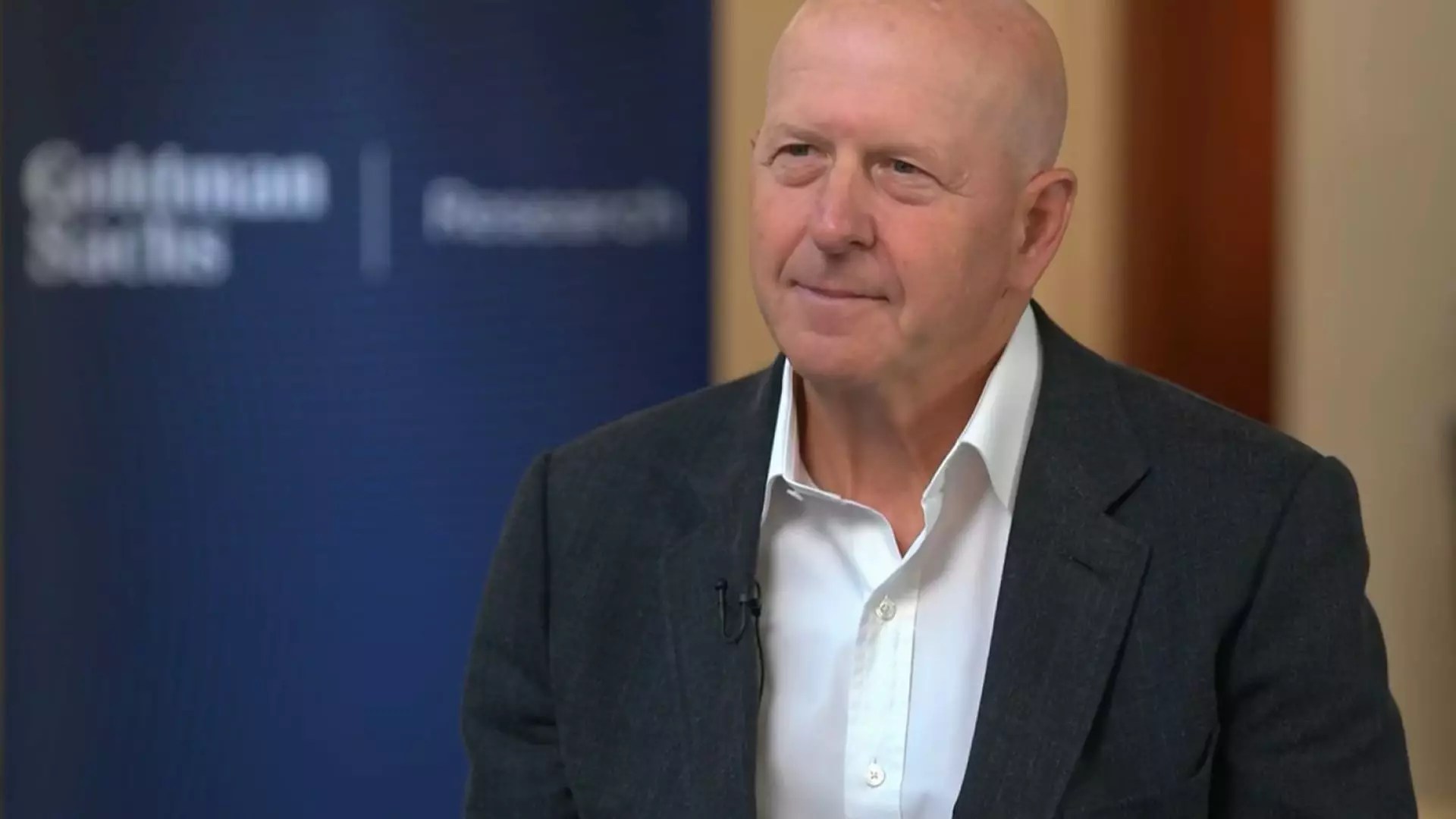Goldman Sachs has released its first-quarter results, shaking off the shadows of economic uncertainty that have loomed over Wall Street. With earnings of $14.12 per share, far exceeding the $12.35 estimated by analysts, the financial giant posted a sturdy revenue figure of $15.06 billion—compared to the predicted $14.81 billion. While these numbers shine a light on a well-managed bank, they also beckon a more profound analysis of the underlying market conditions and strategic adjustments that supported this unexpected performance.
The bank’s ability to notch up a 15% increase in profits, reaching $4.74 billion, cannot simply be attributed to good fortune. The real story lies in its robust trading capabilities, particularly within its global banking and markets division, which saw revenue increase by 10% to $10.71 billion, mainly driven by a remarkable 27% rise in equities trading — translating to $4.19 billion. It’s noteworthy that this revenue exceeds initial forecasts by $540 million, marking a significant win for the traders over at Goldman.
However, beneath these positive figures, there are cracks in the facade. Goldman’s fixed income division reported a mere 2% uptick in revenue to $4.4 billion, missing the expected $4.56 billion. This discrepancy raises concerns about the bank’s ability to diversify its earnings stream effectively. Lower investment banking fees, which fell 8% to $1.91 billion, signal potential issues in advisory revenue that warrant close scrutiny. Even the asset and wealth management division faced challenges, with a 3% revenue decline, further emphasizing a potential overreliance on trading activities amidst volatility.
Resilience in Unstable Times: A Double-Edged Sword
Goldman Sachs’ performance reveals a bank that has adeptly navigated the turbulent waters created by escalating trade tensions under the Trump administration. CEO David Solomon’s comments underscore the precarious environment in which the bank is operating, acknowledging that the second quarter presents a markedly different landscape than earlier this year. Despite this volatility, the output from Goldman’s trading desks was impressive, pointing to a highly skilled workforce that knows how to capitalize on market fluctuations.
Yet, while there’s much to applaud in terms of trading revenue, the mixing pot of underlying weaknesses raises genuine questions about sustainability. Can Goldman’s current trading triumphs offset the declines in other significant areas of its business? When one revenue stream surges, others must not be allowed to falter. If dependence on equities trading grows, the bank risks exposure to sudden market shifts that could spell disaster in times of economic distress.
The ability of financial institutions like Goldman Sachs to weather political and economic storms will continue to merit scrutiny from analysts and investors alike. Each quarter’s results are accompanied by a chorus of speculation, with stakeholders keenly interested in feedback regarding corporate clients amidst ongoing uncertainty.
Comparing Rivals: The Landscape of Investment Banking
While Goldman Sachs displayed resilience, its competitors have not sat idly by. Rivals such as JPMorgan Chase and Morgan Stanley also reported first-quarter results that exceeded expectations, driven by booming equities trading thanks to turbulence in the economy. With equities trading revenues skyrocketing—48% for JPMorgan and 45% for Morgan Stanley—one must wonder whether Goldman’s performance, though commendable, is merely a reflection of market conditions rather than an indication of superior performance.
These figures illuminate a sobering reality: in a fiercely competitive environment, trading prowess is not just an asset, but a necessity. Banks cannot afford to rest on their laurels. They must innovate and adapt to maintain clients and market position.
Additionally, amid heightened volatility, there’s a growing sentiment that consistency is key. A monolithic focus on trading, while lucrative in the present, may severely undermine Goldman Sachs’ long-term stability. As conditions evolve and trade tensions fluctuate, the bank’s ability to offer a diverse array of services will become paramount in establishing itself as a reliable partner.
In essence, Goldman Sachs is at a crossroads: it can continue banking on its trading expertise in the short term or invest in diversifying its offerings to hedge against future uncertainties. The decisions made and adjustments undertaken now will inevitably shape its destiny for years to come.


Leave a Reply